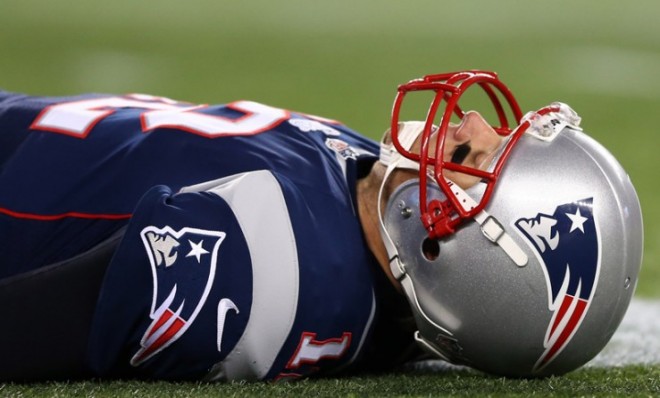The NFL's concussion epidemic: Finally, a major breakthrough?
UCLA researchers say they can now use PET scans to identify brain damage in players while they're still alive

The NFL's concussion crisis is a public-relations nightmare for commissioner Roger Goodell. Years of brutal hits can do irreversible damage to the brains of even the toughest athletes, and recent studies have shown that a neurodegenerative disease called chronic traumatic encephalopathy, or CTE, is a major problem for retired football players. But CTE has long been tough to diagnose, as the damaged tissue could only be examined after a player was dead, which, of course, doesn't really help those battling risky symptoms like mood swings and depression. But now, UCLA researchers are pioneering a new technique that would allow doctors to identify CTE's signature while the patient is still very much alive. Here's what you should know about the breakthrough:
First off: What causes CTE, exactly?
Sustained and repetitive trauma to the head. CTE can affect former NFL players, professional wrestlers, boxers, hockey players, and anyone else who regularly partakes in violent, high-impact sports. Symptoms include mood swings, depression, dementia, and other cognitive problems that begin manifesting more intensely as a retired player approaches middle age.
The Week
Escape your echo chamber. Get the facts behind the news, plus analysis from multiple perspectives.

Sign up for The Week's Free Newsletters
From our morning news briefing to a weekly Good News Newsletter, get the best of The Week delivered directly to your inbox.
From our morning news briefing to a weekly Good News Newsletter, get the best of The Week delivered directly to your inbox.
How do scientists identify CTE in a player's brain?
CTE is associated with the build-up of a protein called tau, which is typically used to ID Alzheimer's. Previously, to identify the protein, researchers had to cut into the brain tissue, stain it with an amino acid called AT8, and analyze the neurofibrillary tau tangles under a microscope. But now, researchers have figured out a way to identify potentially mind-bending tau deposits using non-invasive position emission tomography, or the routine PET scan.
How do PET scans work?
For this study, the results of which were published in The American Journal of Geriatric Psychiatry, doctors enlisted five former NFL players between the ages of 45 and 73 who had all sustained at least one concussion. The players included a linebacker, a guard, a center, a defensive lineman, and a quarterback. Doctors injected them with something called FDDNP, a chemical marker that binds to tau and other amyloid beta plaques. Unlike AT8, the chemical is visible under a PET scan. The study's authors said the technique revealed tau deposits in the living subjects' brains associated with CTE.
A free daily email with the biggest news stories of the day – and the best features from TheWeek.com
Has the study been well received?
Many observers seem to be somewhere between skeptical and cautiously optimistic. Some say the sample size of the group, at least in this case, is way too tiny. Others question the accuracy of the FDDNP marker used to identity tau deposits, especially since it binds to other brain plaques. Nonetheless, the study's authors say the early results are promising, and one day, could help ensure the safety of athletes in contact sports. "For the first time, it opens the possibility we can intervene and stop the inexorable decline" of those with CTE, Dr. Julian Bailes, co-director of the NorthShore Neurological Institute in Evanston, Ill., and originator of the research, told the New York Times. "We are connecting more dots. This was the holy grail of CTE."


